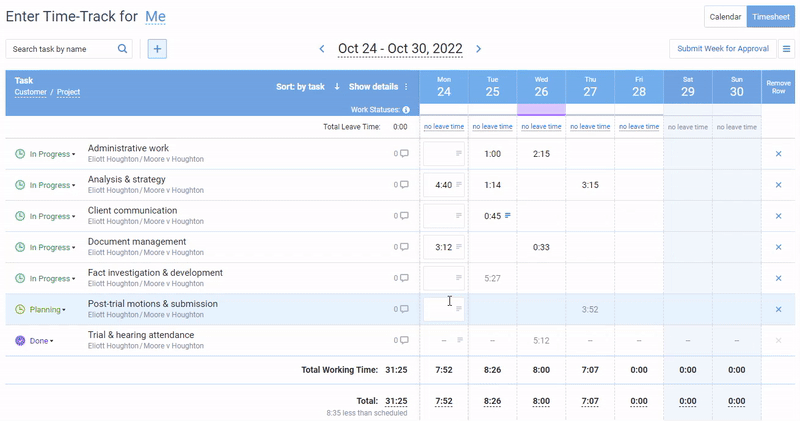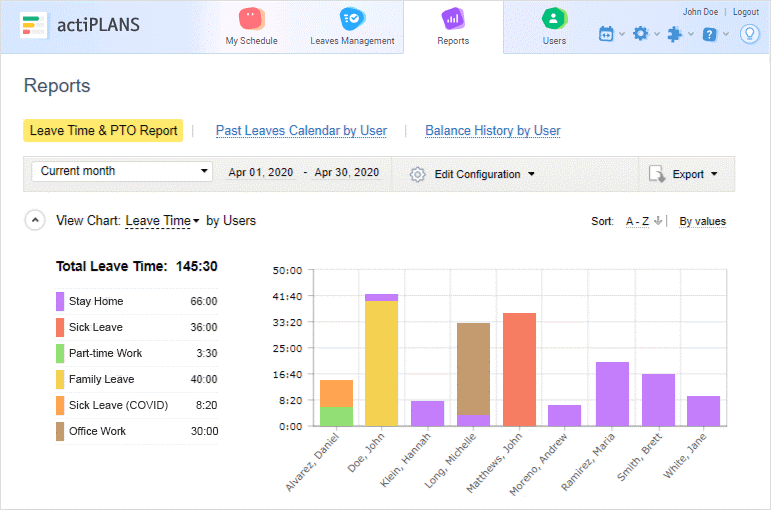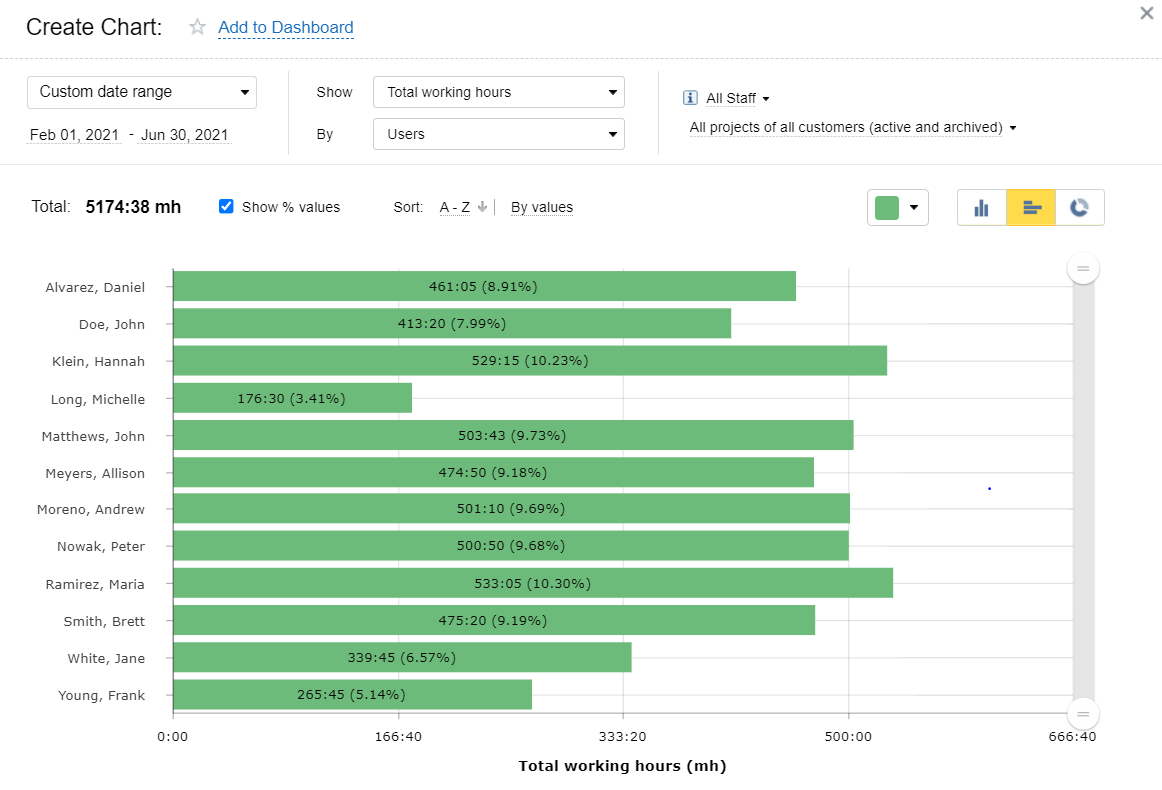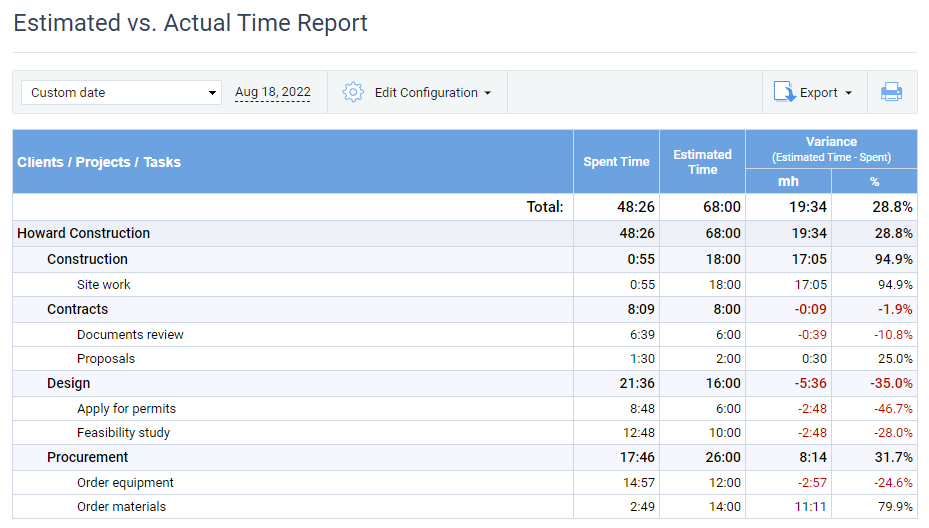
It’s that time of the project again. The time when you realize you may just don’t have enough resources to get things done. You start to panic: what were you thinking, trying to pull this off?
Stop hyperventilating and take a deep breath – there are solutions out there!
In this blog post, we will go over 7 smart tricks for overcoming resource constraints in project management so you can stay on track and make it through the times when money is tight or personnel is at a deficit.
Keep reading for practical tips that successfully guide projects toward their goals even while under stringent restraints!
What Are Resource Constraints?
Resource constraints are the limitations and boundaries applicable to project resources, be that time, money, employees, or anything in between.
In essence, resource constraints are the reality we all live in – our resources are finite by their nature; we can’t do everything at once, and, thus, we need to be mindful of what we do with what we have.
According to Triple Constraint Model, a project’s scope, your team’s time, and financial resources are interdependent, and any change in one of these variables will inevitably affect the others. For example, if you need to speed up the project’s timeline, you may end up sacrificing some of the project’s objectives or having to throw more money at it to meet the tighter deadline.
This means that project managers need to be careful about how much they demand of their teams and ensure that they’re making the most of the resources available. It’s a delicate balancing act that requires careful planning, communication, and a healthy dose of flexibility.
Examples of Resource Constraints in Project Management
- Budget constraints can occur due to limited financial resources, unexpected expenses, or sudden cost variations. These constraints limit the availability of funds required to complete a project. Hence, you must use your finances judiciously to balance the available resources with project needs.
- Time constraints can be caused by tight deadlines, time-sensitive deliveries, or limited work hours. They reduce the availability of time required to complete the project, causing stress and increasing the risk of project failure. Proper time management techniques must be utilized to ensure the project is completed on time.
- Human resource constraints occur due to staff shortages, skill shortages, or mismatched team dynamics. It’s all about the availability of people required to complete the project up to a high-quality standard. It encourages project managers to prioritize the planned tasks, identify critical project roles early on, and assign work responsibilities strategically.
Top 3 Things That Worsen Resource Constraints
- Scope creep: This happens when the project starts to expand beyond its initial parameters, taking up more resources than anticipated – and suddenly, your team is scrambling to meet demands that were never included in the original plan. Scope creep can be caused by ever-changing client requirements, poor project planning, or ineffective communication.
- Unforeseen risks: No matter how well-planned a project is, unrecognized risks can always rear their ugly heads and make everything go awry. Maybe a key team member falls ill or a supplier suddenly goes bankrupt. Plus, there are economic downturns, industry shake-ups, and even natural disasters to beware of since they also may easily put a strain on your resources.
- Ineffective resource allocation: If you assign too many employees or time to one task, you may end up depleting your resources too early, leaving other crucial tasks without the necessary attention. On the other hand, if you don’t assign enough resources to an activity, it may take longer to complete than anticipated, leading to schedule delays and cost overruns.
Strategic Approach to Resource Constraints in Project Management
Resource constraints may look like something to be afraid of, and it’s not surprising that many managers try to avoid them whatsoever. The problem is – resource constraints in project management can’t be eliminated all at once and entirely. But luckily for us, there is a theory that resource constraints can actually be used to propel improvement.
The Theory of Constraints (TOC) is a business management philosophy that aims to identify and tackle the bottleneck (aka constraint) that limits an organization’s productivity. First introduced by Eliyahu M. Goldratt in his book, “The Goal,” TOC focuses on improving the efficiency and effectiveness of an organization’s operations by optimizing its constraints.
The main goal of TOC is to increase the throughput, i.e., the rate at which an organization generates revenue through sales. It suggests that by identifying and undertaking smart measures against resource constraints in the production process, you can learn to use your resources more efficiently and consequently increase your profitability multifold.
To achieve this goal, you need to increase the material flow and boost operations within the most limiting constraint first. And for this to happen, you need to follow the following steps:
- Identify the worst constraint that limits your productivity: It could be a physical constraint, such as a machine, or a human resource constraint, such as a lack of skilled workers.
- Exploit the constraint: Optimize and utilize the identified constraint to its full capacity, ensuring that it operates efficiently and is not idle or underutilized.
- Subordinate everything else to the constraint: Adjust the entire system’s operations to align with the constraint’s capabilities. For instance, an organization may prioritize the production of products that run smoothly through the bottleneck.
- Elevate the constraint: If the constraint is not adequate, you need to invest in additional resources or technology to enhance its capacity.
- Repeat the process: Once the constraint is resolved, the organization identifies another constraint and repeats the process.

Now, let’s explore some practical tips and best practices for optimizing your resource constraints and minimizing their negative effects on project productivity:
How to Minimize Resource Constraints in Project Management
1. Clearly define the project scope
Defining project scope is like setting a clear boundary around your project. This boundary helps you identify what is in and what is out, so you can better allocate your resources. It’s like building a moat around your castle to keep unwanted tasks and requests at bay, while also protecting your valuable resources from being drained.
Here’s how to define the project scope:
- Identify project objectives: Start by asking yourself the “what” and “why” of the project. What is the project meant to achieve, and why is it important? Identify the outcomes you aim to get and determine the success criteria for each outcome. This will help you to keep the project focused on its objectives.
- Develop a work breakdown structure (WBS): A WBS is a hierarchical structure that breaks down the overall project scope into smaller, more manageable components. It’s like a project outline that helps you define all the work that needs to be done to attain the set goals.
- Agree on project scope with stakeholders: Stakeholders are the people who have a vested interest in the project’s outcome (e.g., clients, sponsors, top managers, team members, etc.). You need to analyze their expectations and align them with the entire scope of work to make sure everyone is on the same page and reduce the risk of scope creep down the line.
2. Estimate time and costs more accurately
Accurate time and cost estimation guarantees that the project stays on track and within budget, providing a clear roadmap for success. It also allows for effective resource allocation, ensuring that each team member is utilized efficiently and effectively.
When estimating project time:
- Consider the complexity of each task: You either need more experienced and skilled employees to handle complicated tasks fast or allocate longer time for their completion.
- Consider your past experience: If you have worked on similar projects before, you can use that experience and collected performance data to estimate the time needed for each task.
- Consider resources available: If your resources are very limited, it will take much longer to complete a task.
When estimating project costs:
- Consider the hourly cost of each resource: This includes the cost of salaries, benefits, office space, and equipment.
- Consider the amount of time required for each task: This will help you to estimate the long-term cost for each task more accurately.
- Add contingency: Take into account unexpected delays, unplanned employee absences, and other factors that may impact the overall cost of the project.
When estimating project tasks, you may utilize a variety of different methods and techniques. But no matter which one you decide to choose, you can make the estimation process significantly more accurate and convenient with the help of a trusty time tracking tool like actiTIME.
This smart time tracker allows you to:
- Use manual-entry timesheets or a fully automated activity tracker to collect precise data on the time invested in each task.
- Set hourly cost rates for different types of work to track staff-related expenses incurred by your projects.
- Run comprehensive reports to compare your initial estimates with actual performance results and get evidence for estimating similar future projects.

Ready to simplify your project estimation process? Give actiTIME a try!
3. Predict resource capacity
The goal of predicting resource capacity is to figure out whether you have enough resources to complete the planned work and minimize the risk of over-staffing or under-utilizing your resources. In short, you want to find that sweet spot where your resources are working efficiently and effectively, without burning out anyone or under-stimulating your team.
Here’s how to do that:
- Estimate employee availability: Calculate the amount of working time each employee has at their disposal and analyze these numbers against your project scope and timeline. This will help you understand whether your estimates and actual resource availability match or whether you need to hire an extra pair of hands and heads.
- Factor in employee absences: Even the most dedicated and hardworking employees need to take a breather from time to time. Thus, you should schedule tasks around their planned days off, as well as unexpected illnesses, emergencies, or other unforeseen circumstances that can slow down your project’s Aim to schedule it all in advance but have a contingency plan in place and be flexible enough to adjust your schedule if needed.
Keeping track of who is out of the office, when they’re coming back, and how it affects the overall project productivity can be daunting. Yet with actiPLANS, you can effortlessly stay on top of it all.
This handy resource scheduling solution streamlines the entire absence management process, making it a breeze for every party involved. Plus, with its informative time off reports, you can predict and plan for those busy work days in advance, making sure your team is always ready to tackle what’s thrown their way.

Take the guesswork out of resource planning with actiPLANS – sign up for a free trial today
4. Distribute workloads more evenly
When team members are assigned a disproportionate amount of work that they are incapable of doing effectively, they are bound to become overwhelmed and stressed way too quickly. Such a situation inevitably leads to a dip in team productivity and morale, which can later result in missed deadlines, poorer performance quality, and even an ultimate project failure.
Here are a few things you can do to prevent that:
- Assign tasks based on expertise and strengths: No two employees are the same. Therefore, it’s important to delegate tasks based on individual capabilities to yield better productivity. Assigning tasks to those who possess the requisite skills and experience ensures better output and also motivates employees to work harder, knowing that their strengths are recognized and valued.
- Prioritize tasks: Not all tasks are equally important, and you need to prioritize them according to their urgency, relevance, and complexity. You either need to assign the most critical and challenging tasks to experienced or expert employees or allocate some buffer time for their completion. This will increase your chance to get the work done efficiently and effectively and minimize the risk of any serious errors.
- Implement the Kanban board: This powerful tool acts as a visual representation of the entire workflow. It depicts the tasks at hand, their progress status, and their priorities in a single snapshot. By simply looking at the Kanban board, you can easily grasp the entire workflow, see if the team has too many / few tasks in progress, and identify potential bottlenecks or inefficiencies. This makes it easier to shift tasks, prioritize them, or even eliminate them altogether.
5. Manage risks with care
Whether it’s unforeseen financial difficulties or a sudden shift in priorities, uncontrollable risks can come as the grim reaper of project success. So, if you’re looking to avoid a sudden soul-crushing defeat and stay on top, it’s essential to be one step ahead and prepared for whatever obstacles may come your way.
Here’s how you can manage risks more effectively:
- Identify potential risks: You can do this by utilizing historical project data, brainstorming sessions with your project team, and analyzing input from external stakeholders. It is essential to consider all types of risks, including technical, financial, and operational risks.
- Assess each risk: This step involves determining how likely each risk is to occur and the impact it would have on the project timeline, budget, and quality. By assessing risks, you can prioritize which risks to manage first and allocate resources accordingly.
- Create a plan to mitigate or manage risks: It should detail how you will respond to each risk, including preventative measures, contingency plans, and escalation pathways. Make sure to involve all relevant stakeholders in the process and keep them aware of the created response plan.
- Monitor and control risks: Risk management is not a one-time event. It’s an ongoing process that requires continuous monitoring and control. Regularly review the risk management plan to ensure that it’s up to date. You may also need to modify your response strategy if new risks arise or if existing risks evolve.
6. Analyze resource utilization
By analyzing resource utilization, you can identify any bottlenecks or inefficient practices that are causing delays and costing the organization precious time and money. With this valuable information, it’s easier to take the right corrective actions to optimize resource allocation, which is particularly important if your resources are scarce.
Here’s how to measure and improve resource utilization:
- Choose appropriate metrics that are relevant and specific to your project: These metrics will act as performance indicators and will help you measure the effectiveness of your approach to resource allocation. Some popular metrics include the resource utilization rate, cost variance, on-time completion rate, etc. You may learn more about them in this post.
- Implement a reliable project management tool to gather data: A tool like actiTIME can help you track and analyze your project progress in real time. Plus, it includes a variety of reports to get invaluable data for measuring your resource utilization.
- Analyze the information you have gathered: This step is crucial in identifying any problems and opportunities to improve resource utilization in your project. Pay attention to the trends, outliers, and patterns in the data to uncover the root cause of any issues. From there, you’ll be able to create an action plan to address these problems and enhance resource utilization.

7. Optimize critical processes
Process optimization ensures consistency and quality in project outcomes, thereby enhancing the reputation and credibility of the organization. In contrast, a poorly optimized process can lead to errors, delays, and even failure, all of which can be costly in terms of both time and money.
Here’s what you can do to optimize your project processes:
- Detect bottlenecks or other problems: It’s important to take a step back and assess where the bottlenecks are slowing down your progress. Maybe it’s a team member who is falling behind, or perhaps there are too many unnecessary steps in your workflow.
- Streamline the workflow: This could mean simplifying your processes, automating certain tasks, or delegating responsibilities more efficiently. The key is to create a workflow that is efficient, logical, and easy to follow.
- Set clear performance expectations: Communicate project goals, deadlines, and success metrics to your team loudly and clearly. When everyone is on the same page, it’s much easier to track progress and make adjustments as needed.
- Continuously evaluate and improve: Whether it’s tracking your progress against your performance expectations or looking for new ways to streamline your workflow, there is always room for improvement. The key is to stay agile and adaptable so that you can continue to optimize your work processes and crush your project goals.
actiTIME can make your process optimization journey much less challenging and more successful.
With its assistance, you can easily track how much time each team member spends on each task, identify which tasks are taking longer than expected, and which team members are struggling to complete tasks on time.
From there, taking action to optimize processes is as easy as pie. For instance, you may choose to assign certain tasks to different team members based on their strengths or skills. Or, you may identify particularly time-consuming tasks and find ways to streamline them.

Conclusion
Resource constraints can be a difficult reality to face when managing projects. However, utilizing the strategies outlined in this blog post can help you to overcome project challenges and boost your team’s efficiency:
- Start by clearly defining your project scope
- Master the art of project estimation
- Learn to predict resource capacity
- Balance team workloads to promote productivity
- Manage risks with sufficient care and attention
- Optimize and streamline work processes
- Empower your team with the right tools, such as actiTIME
With these tips, as well as proper planning and management techniques, project success is within reach.
So why wait?
Start using actiTIME now and watch productivity skyrocket!












































